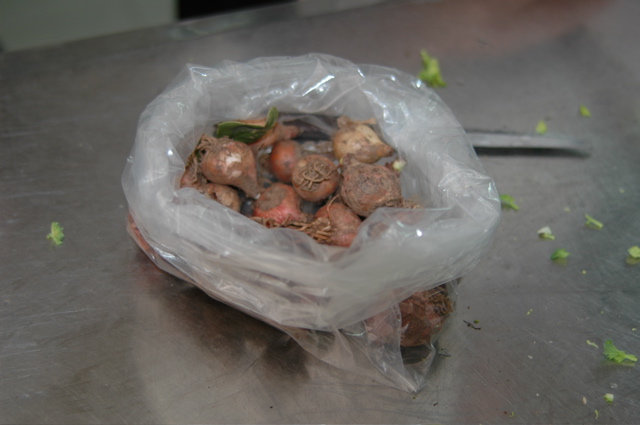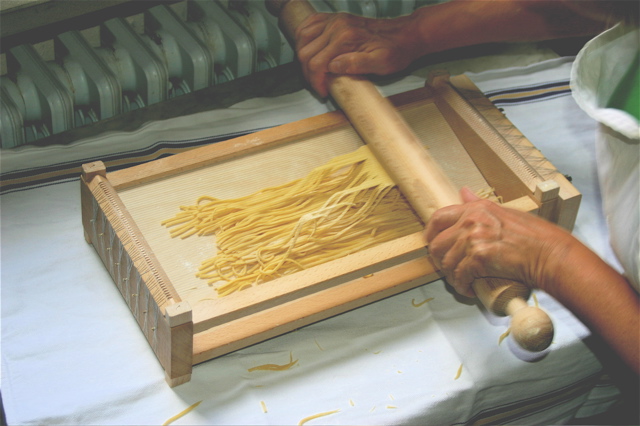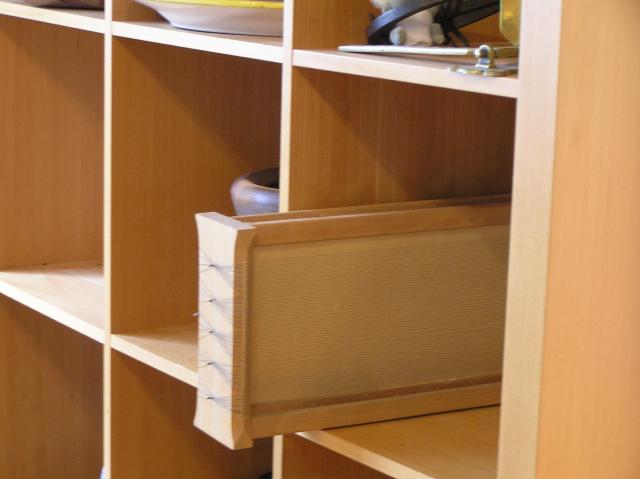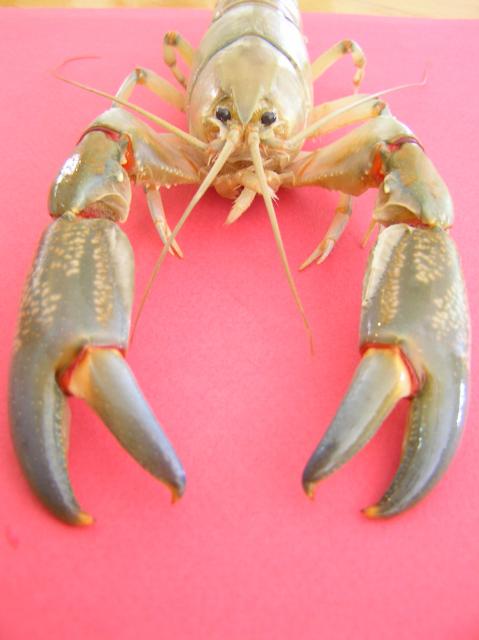-
Posts
4,900 -
Joined
-
Last visited
Content Type
Profiles
Forums
Store
Help Articles
Posts posted by Adam Balic
-
-
James - lovely book and wonderful to see the cooking from this region of the world being popularized.
A quick question if I may. I have managed to produce some turmeric plants from rhizomes bought at a local SE-asian grocer. Specifically I want to use the leaves in cooking rendang, however, do you know of any other dishes that the leaves are used in?
-
Unfortunately the article dosn't investigate what the "powdered milk" actually is. Is it a whole milk product or is a more refined product like whey or milk replacement formula for instance?
Chickens don't have the necessary enzymes to use lactose as an efficient energy source, it you are lactose intolerant you can guess what fresh milk would do to the chickens. If they have the right bacteria in the gut, these can break down lactose and the chickens can take advantage of this. You can also add lactose specific enzymes to the feed. Whey is obviously a big by-product of cheese so there is much use of it in livestock feeds. Many commercial poultry feeds have whey that actually have an increased amount of lactose (compared to mammalian feeds) to deal with it's poor conversion rate.
I'm not sure of the legal definition if "milk" in the USA, but it might be possible that people using quite commercial poultry feed could claim "milk fed" if whey et al falls under the legal definition of "milk"?
Desriptions I have seen of more tradional methods of adding milk to poultry diets includes leaving the milk to "turn", which means that the lactose has been removed by the bacteria present in the milk. The milk ends up looking like sloppy cottage cheese.This Link shows some chickens being fed on milk in a more traditional manner, and demonstrates that actually some "milk fed" chickens are actually milk fed. It would be interesting to compare the flavour and texture of the tradional and formular milk fed chickens.
Also feeding chickens with milk isn't a new thing or a specifically French thing. There are many descriptions if feeding milk to poultry in UK an USA sources, in fact most historical descriptions on poultry fattening seem to mention milk or skim milk.
"...cramming them [chickens] with fine down corn made in rolls and dipped in milk; they are received by all people as the finest of poultry"
I don't know enough about the early 20th century poultry industry, by I would guess that "milk" in the form of whey and other dairy based by-products has always been part of a feed mix for commercial poultry. If the farm in question is using dried milk in the form of veal milk replacement formula, I can't see that this is any different to using "dairy" based chicken feeds, such as described in this link which is used on a commercial basis.
-

These are called Lampascione. It looks sorta like a shallot from the outside, but is not an onion. It is the bulb of a Hyasinth flower. They are very bitter, and require blanching, and soaking in salted water, then cooked into a dish as you would use a potato, but not as an aromatic vegetable.
Lovely images. In English, I think that these are "tassel grape hyacinth".
-
The function for these dishes was to preserve the fish, so in theory weeks or months, but in practice I think something less then that.
I have been meaning to make this dish for a white, so thanks for the reminder.
-
It looks like a version of escabeche (scabecciu in Corsican dilect), a common way of preserving fish in a vinegar base around the Med. (and the rest of the word for that matter). As far as I know there are no native populations of salmon in Corsica and the star anise doesn't sound very typical either.
But a basic recipe* might be:
1 kilo of fish
salt
200 ml olive oil
1 lemon
seasoning (bay leaves, cinnamon stick, onion, star anise etc)
150 ml white wine vinegar
50 ml water
Season fish with salt, fry fish in half the olive oil until just cooked through, pat of oil with kitchen towel, and put fish into a sterile jar or baking dish, layer with lemon slices. Discard oil used to fry fish, add the rest of the oil to the pan with the seasoning and cook for 1-2 minutes until seasonings release their scent. Add vinegar and water, boil for 5 minutes then pour over the fish, allow to cool, then store fish in a cool place or refridgerator for 2-3 days.
* based on a recipe by Rolli Lucarotti
-
Tuna, mackerel and bonito all belong to the Scombridae family. Big tuna (and billfish) have a large amount of dark muscle, but unlike smaller fish it is located internally, along the spine. This tends no to be considered good eating in general and is often discarded. In tuna (except for albacore) the pink to red colour of the "white" muscle is due to the presence of large amounts of myoglobin (when treated with carbon monoxide, the flesh can look as bright as candy).
I actually like "fishy" fish. Especially freshly caught mackerel.
-
In the USA, this site is one of the more useful, if not perfect.
-
Salmon is a fatty fish. It doesn't meet the definition of "fishy" in this thread? I ate a lot of mackeral (ikan selayang and ikan kembung) in Malaysia, and it was a lot leaner. I guess I still don't understand.
Salmon has a large amount of storage fat, but differs from typical oily fish in some important ways.
Very basically, fish have two broad types of muscle, light and dark. Different types of fish have different ratios of dark to light, depending on the activity of the fish. Light muscle is good for fast and short duration movements, while dark muscle is good for sustained movement. So cod has very little dark muscle, where as herring and mackeral approaches 50%. In the light muscle, the energy source is mainly is glycogen, whereas the dark muscle may also use lipids, which are broken down by powerful oxidizing enzymes. The breakdown products of these lipids are what can give a characteristic "fishy" flavour, and the problem for storage of much of these fish is that the lipids oxidize even when cold stored. Smoking and saltiing may be one way of reducing oxidation.
Salmon have a lot of fat stored, but not a huge amount of dark muscle, compared to light muscle. In processing salmon, a lot of producers will actually remove the dark muscle to avoid fishyness.
I have only been in areas where one species of salmon exisited, but I wonder if in North America, some of the preferences for certain types of salmon are based on the basic light to dark muscle ratio of individual species?
-
Nope, shelves clear due to 14 month old boy. Chittara happens to be there as he likes to play the strings like a harp....
-
If any of them sound intriguing to you..PM me and I'll send you the recipe.
My favorite pasta to make is 'alla chittara', or guitar string pasta. It's just the most handy-dandy pasta cutter, simple and effective. If you find one, buy it. I mad because mine is in Italy, and I'm *not.


*“Guitar-string” pasta with ventricina sauce (The ventricina is a soft salame typical of this area, flavoured with hot red pepper and fennel seeds and takes its name from the fact that the casing is usually taken from the stomach, or ventre.)
*Guitar-string pasta with lamb ragù
*Guitar-String Pasta with Fresh Tomata
and Aromatic Herbs from the Maiella Park
*Guitar-String Pasta with Poor Man’s Ragù (This is a very wacky recipe. Calls for hard boiled eggs that you cut apart, tie up, which is not so easy..then take them apart and mush them up into the sauce. If somebody wants this recipe, I'd suggest keeping the eggs whole so that you can show off your handiwork.)
Lamb and Artichokes
ciao!
Oh, look what I have in my cupboard! How about I get back into the swing of cooking after a break by making lamb ragu?

-
Normal preparation would be to soak them to remove the blood (20 minutes in iced water or milk), then to blanch them (10 minutes in gently simmering water or stock, then into ice cold water), then trim them of membranes and tubes etc, then they can be used in various recipes.
-
Opened a bottle of this around a month ago. Makes a very interesting style contrast to the rest of the Penfolds range.
-
I'm not that the line can be drawn that precisely. Oily fish will smell and taste more "fishy" (there must be a better way of expressing this), then white fish, not matter how fresh. Also fish that have a lot of dark muscle will be more fishy. Compare the flavour in the white v dark portion of cutlet of swordfish for instance.
In general, white fish freezes much better then oily fish, in some cases people's preferances are shaped by what it avalible to them (as well as the other way around).
-
I have read that the "classic " method is to pour the batter into the roasting pan at the end of the roast's cooking, leaving the roast above. The fats are all roast dripppings and as the pudding cooks, it gets dripped on a little more. I've never quite pulled this off, usually use a rack or mirepoix vegetables and can't seem to figure how the pudding could work on top of that stuff.
This method works when "roasted" meant that the meat was cooked in front of a open heat source, rather then being baked in the oven as it generally means now. If you think about it, the conditions required for a successful pudding and roasted meat are not going to occur together in an oven at the same time.
A more detailed description of the method is shown on Ivan Day's excellent site (scroll down to "batter puddings").
-
Certainly, drying them out a bit in the oven will keep them crisper and stop them deflating. But this does give a different result, and as alanamoana mentioned, it depends on taste.
Personally, I think that Yorkshire puddings fresh out of the oven are far superior to the more dried out option that never seems to soften properly, no matter how much gravy you pour over. Invariably, I make them using lard and keep the juices/dripping from the roast to make the gravy. Doing this will allow you more flexibility if you want to cook them in advance and hold them.
Funny how there are so many variations in preferance for such a simple dish. Some older accounts of the pudding say that "the local preparation of Yorkshire pudding seems to have been quite a speciality, and I have never seen a faithful representation elsewhere........[in Yorkshire] it was always thin and apt to be crisp if roasted too long. In London and elsewhere I have invariably found it very thick, resembling what we called in Yorkshire a batter pudding."
-
-
Some native pies would be:
Mutton, onion and apple ("Squab Pie")
Beef and Oyster
Pork, white wine and apple (Cheshire Pork Pie)
Gammon and apple (Fidget Pie)
Rabbit, pork (Stropshire Pie)
Chicken and Gooseberry
Plain Mutton (Glasgow "Tuppenny Struggles")
Monckton Milne Mutton and Oyster Pie (originally a pudding)
You could do a variation on a hotpot, but with a pastry base and a sliced potato lid. Lots of oppertunity for variations (lamb/mutton, oysters, mushrooms, kidney) and makes a change from the mashed potato top.
-
"Yabby/yabbie" is an Anglo- form of "yabij", which is their name in a Wemba-Wemba Australian aboriginal language.
-
I was fishing last night actually. Off a pier with about 30 old Greek and Italian guys. I left just as they were starting get the evenings calamari catch.
The first fishing I ever did was for these guys. I remember being taken to a dam on my grandfathers farm and been given a chunk of mutton tied onto a length of my grandmothers knitting wool. This was dropped into the water and when the string went taunt you slowly pulled it, and hopefully the yabbie, up and into a bucket. I must have been four-ish, but I remember it very clearly. I know now that it isn't a very good method for catching yabbies, but it was a real highlight of my childhood.

-
The recipe I use if from my BIL's mother.
1 kg Mascapone
8 egg yolks
6 Tablespoons sugar
Expresso coffee
Pavesini
Mix together mascapone, egg yolks and sugar until creamy. Dip Pavesini in expresso, layer until done.
The mascapone can be a problem, some UHT brands here in Australia end up curdling when mixed.
I'm away for a few weeks, but will try to get to it soon.
-
This image detail may be of interest. It's from Jean François de Troy's 1735 painting Le Déjeuner d'Huîtres (Luncheon with Oysters) which is thought to represent the earliest image of champagne in a painting. Interesting the bottles are of the type refered to as "generic liquor bottles", in otherwords they were not specifc to champagne at this time, but were used as they are robust type of bottle. This type of hand molded bottle is thought to derive from the onion type bottle, which in tern is thought to be derived from globula type apothecary bottles. If you look at the 15-17th century examples in this link, you can see their punts very clearly. Obviously they could be wrong and these may actually be tiny wee bottles of champagne.

-
So I'm not sure where this leaves us.
In your original post you gave an example of a late medieval/early modern bottle with a punt and from the suggested that punts developed as a technology to deal with the internal pressure in sparkling wine?
I pointed out that corks were not in common useage in this period and without a decent seal, there would be no point in developing a stronger bottle for this single purpose.
However, there is no evidence that historical sparkling wines created pressures that required a punt and in any case historical accounts of sparkling wine seem to first occur in the 17th century, well after the appearance of the punt.
-
Sorry, that is essentially what I said earlier. I don't understand the point that you are making?
Cork oaks have been around for a long time and there is evidence that it has been used sporadically though in the last few thousand years as a closure, but widespread use of it as a closure in wine bottles is largely an 18th century phenomena. -
Adam, I believe you are right about the widespread use of cork in wine flasks, but there is (reputedly, I don't remember where I read this right now) a history of limited use of cork in the Baltic region dating back much further. However, wine flasks or bottles used to be sealed with a variety of stoppers--glass or clay mainly--and seated with hot wax or in some cases, pitch. Some of these seals may have been strong enough that a blown bottle would crack at the base, where there would be more surface area for the wine to push against, more exposed irregularities in the glass, and the weakness of the seam between the wall of the bottle and its base.
Sure, but it seems that those seals just were not great as a seal. The oldest glass bottle of wine that still contains it's contents (found at Speyer, Germany) has a layer of oil at the top to prevent oxidation of the contents, just like is speculated for in some amphora. When you look at how quickly the cork business developed around Europe in the 18th-19th century, you can work out that previous closures were just not that good in comparison.
I wonder if enough pressure would be generated to create sparkling wine in the style of 'modern' champagne in early modern times, given the dodgy closures. You can have bubbles in wine without the generation of huge internal pressures, I wonder if champagne was similar to these wines when the producers or sellers decided to market this feature of the wine and the internal pressure of the wine (and the amount of bubbles) increased over time as the bottle/closure technology improved. In other words if you are going to consider developemt of a specific piece of technology, you have to consider all it's component parts. I don't think that anybody would think that champagne just suddenly appeared in it's modern form in the 17th century (hence the Dom reference, which is a great example of people revising history to explain phenomena that they don't understand).
The bottom line is that the punt is a much stronger structure then the flat based bottle and also much more stable (even in the bell shaped 17th century English bottles). In the early wide based bottles, the punts are actually more of a dimple then a deep indentation, which makes me think that they are more likely to be an artifact of manufactor more then anything else. Without a lot of good evidence to suggest otherwise, it's presence doesn't have to based on it's use in sparkling wine. Having observed the bottom of a flat ended bottle of red wine drop off when I knocked it, I can imagine that the strength of the punt is quite useful.
For those that are interested, here (click on links for other bottles) are some images of some older bottles with punts (also called "kick-ups"), some of which would be unsuitable for high pressure contents.



Cooking with "Cradle of Flavor"
in Elsewhere in Asia/Pacific: Cooking & Baking
Posted
Thank you very much for that. It took a few months of trial and errot, but from the look of the plants that I have growing, it looks like I will have a lot of turmeric in the near future. A pity I can't gow my own Cekuh or Salam leaves though.